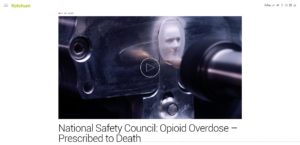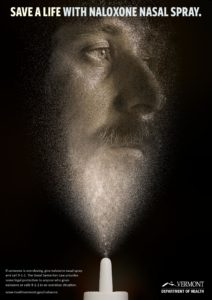Creative Critique: Destigmatizing and Humanizing Opioid Addiction
You would be hard-pressed to find a person who hasn’t been affected in some way by the national epidemic of opioid addiction. Whether as an individual, or through family, friends, colleagues, neighbors—we all know, or at least know of, someone who has struggled with this growing issue.
It’s no wonder, then, during the past year many beautiful and incredibly influential disease awareness and DTC campaigns have been created to destigmatize and humanize this heartbreaking issue. These campaigns drive home the truth that people with addiction issues are not just the individuals who live questionable lifestyles, have separated from society, and are living on the streets. They are the people you see every day, the individuals who have full, successful lives—the high-powered executive, the college athlete, the church-going grandmother who is recovering from surgery. A few current ads speak to this issue; all of which are doing the important job of bringing the conversation forward and shedding light on the issue, as well as challenging the misconceptions around opioid addiction. Here are some of the best:
 Prescribed to Death, National Safety Council
Prescribed to Death, National Safety Council
This robust, award-winning campaign by the National Safety Council was originally launched in 2018, and it has been evolving and growing ever since. It hits all touchpoints—from the traveling monument that personalizes the effect of loss through a display of pills carved with the faces of 20,000 real people lost to opioid addiction in just one year, to the newly implemented “Opioids: Warn Me” stickers designed for people to apply to their insurance cards to ensure doctors and pharmacists have a conversation about the benefits of, and concerns around, the drugs being prescribed to them.
- https://www.ketchum.com/work/opioid-overdose-case-study-prescribed-to-death-ketchum-3/
- https://www.youtube.com/watch?v=0jmDHoPUGKI
 Mist, Vermont Department of Health
Mist, Vermont Department of Health
It’s not every day that you come across great creative coming out of a state health department, but this is certainly a wonderful exception. The series, each page of which beautifully illustrates how naloxone truly does help breathe life back into people on the cusp of death from opioid overdose, captures the powerful impact of the drug and the importance of being able to save a life—all in one striking image.
 Impossible Questions, Partnership for Drug Free Kids
Impossible Questions, Partnership for Drug Free Kids
Most public service announcements (PSAs) tend to be directed toward individuals who are immediately at risk, with the objective of raising awareness and/or changing individuals’ attitudes or actions. This one views opioid addiction with a different lens by speaking to the effect it has on the parents of an addicted child. Through the simple art of storytelling, this PSA highlights the impact of addiction on an intensely personal, relatable level, and shows how, even within the bonds of a marriage, the fight to help someone in the throes of addiction can leave people feeling isolated, afraid, and alone.
- https://www.adweek.com/agencies/these-psas-about-opioid-addiction-focus-on-the-parents-of-sufferers/
- https://www.youtube.com/watch?time_continue=9&v=R0Xo6gXto64
 Pill Case, First Call
Pill Case, First Call
The stopping power of this particular campaign is significant, in part because the ads leave no room for interpretation. By transforming a familiar, everyday object into a depiction of small, powerful vignettes, First Call and VML do a masterful job of illustrating what the future likely looks like if you’re an opioid addict. The individuals shown are literally trapped in the day-to-day reality of addiction—a future that is ominous, dark, and alarming. The powerful imagery captures the incalculable human cost of this rampant epidemic.
 Behind the Door, Huggies
Behind the Door, Huggies
This awareness ad comes from Huggies, an unlikely source considering the brand is universally recognized as being associated with the warm, happy feelings that babies tend to evoke. The video itself addresses the littlest and most innocent casualties of opioid addiction and shares the powerful way Huggies is looking to help effect change in the lives of newborns who are born to addicted mothers. Huggies really shows its values and commitment to its customer base in both this ad and the program the company funds.

